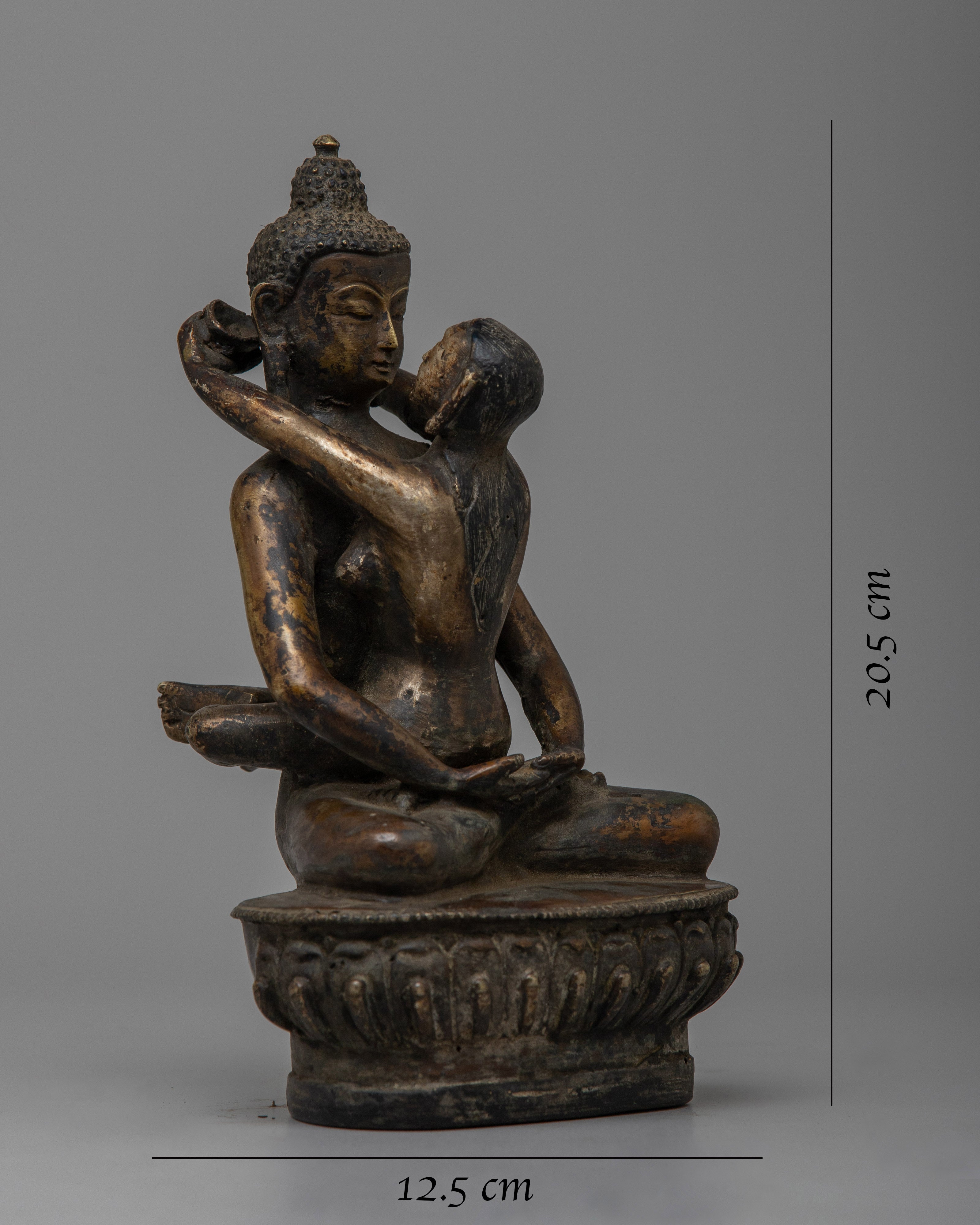Description
Samantabhadra With Consort Brass Statue
About Our Statue
With our brass statue of Samantabhadra with Consort, enter a realm of spiritual harmony. Depicting Samantabhadra in union with his consort, the perfect harmony of wisdom and compassion, this handcrafted 20.5cm statue is more than just a figure; it is a symbol of unity and balance. It is carefully crafted from brass.
Picture this statue decorating your area, its presence providing a daily reminder of spiritual balance and interconnectedness. It is not only a work of art but also a beacon of enlightened thought because of the exquisite craftsmanship of brass, which highlights the deep significance of Samantabhadra's teachings.
Be inspired rather than just envious. This statue can be used to improve your meditation technique, expand your knowledge of Buddhist philosophy, or just look good in your collection. Accept the essence of Samantabhadra and his consort, and allow your spiritual journey to be balanced by their symbolic unity.
Introduction to Samantabhadra
In Mahayana Buddhism, Samantabhadra is a bodhisattva (buddha-to-be) representing benevolence or happiness. He is frequently depicted in a triad with Shakyamuni (the Buddha) and the bodhisattva Manjushri, either on a three-headed elephant or a single-headed elephant with six tusks. In China, he is the patron deity of Mount Emei, located in the province of Sichuan. He is regarded as the manifestation of Vairocana, the cosmic Buddha, in Vajrayana, or Tantric Buddhism. In Chinese, he is known as Puxian, while in Japanese, he is known as Fugen.
--------------------------------------------------
Size: 20.5 cm (Height) x 12.5 cm (width)
Weight: 2.14 kg
--------------------------------------------------
How do you take care of your statues?
• Place them at room temperature, avoiding direct sunlight.
• Make sure that the area where your statue is placed is completely free of moisture and dust.
• Place it at the highest place on your altar after being consecrated by Lama/monks. The best practice is to keep them covered inside a glass cabinet.
• Do not use your bare hands or any objects with a rough surface to wipe the face. • Directly touching with the bare hand objects can smudge the face, leaving scratches.










